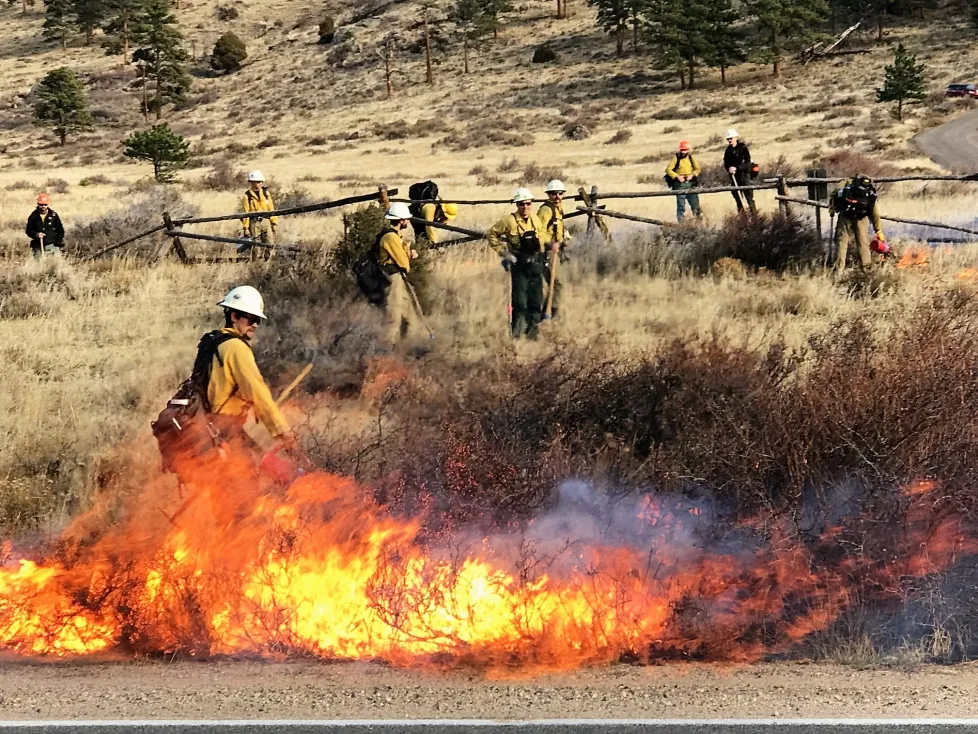
Rocky Mountain National Park announces plans for a potential prescribed burn to reduce wildfire risk
Rocky Mountain National Park fire managers have unveiled plans to conduct a potential prescribed burn, with operations slated to begin as early as late October or extending into winter, depending on weather and fuel conditions. This decision follows the onset of cooler temperatures and increased precipitation forecasted for the coming weeks. Let’s find out information Rocky Mountain National Park announces plans for a potential prescribed burn with nationalparkshops.com.
The Purpose of the Prescribed Burn
The prescribed burn, designed to minimize the threat of wildland fires to nearby communities and critical park infrastructure, would encompass an area of up to 300 acres. The target zone is located west of the Beaver Meadows Visitor Center and south of U.S. Highway 36. The fire would be ignited and controlled over several days, which allows fire managers to manage smoke production more effectively.
The primary objective of the burn is to reduce the amount of available fuel—such as dry vegetation—in the designated area, thereby lowering the potential intensity of future wildfires. Fire managers have drawn on lessons from previous wildfires in the region, such as the East Troublesome Fire in 2020 and the Fern Lake Fire in 2012, where prescribed burns and other hazardous fuel treatments helped contain the fires. These treatments provided valuable buffers that prevented the fires from advancing into the town of Estes Park and stopped them from crossing major roads, such as Bear Lake Road and Trail Ridge Road.
By conducting these proactive burns, the park hopes to create additional firebreaks that could help suppress future wildfires before they reach populated or high-risk areas. This strategy is part of a broader national effort to use prescribed burns as a tool to reduce wildfire risks in vulnerable regions.

Timing and Conditions
The exact timing of the prescribed burn will depend on favorable weather conditions and the presence of appropriate fuel levels. Ideal conditions for the burn include cool weather, sufficient moisture, and manageable wind speeds. Once conditions align, ignition will likely occur on weekdays to minimize visitor impact, with the potential for smoldering and smoke emissions lasting an additional three to ten days.
Traffic and Visitor Safety Measures
For the safety of visitors and fire personnel, a series of traffic control measures will be implemented on U.S. Highway 36, which runs through the burn area. Visitors will be prohibited from stopping along the highway or entering the designated burn zone on foot. These restrictions are crucial to ensuring that firefighting operations can proceed safely and efficiently.
Additionally, while every effort will be made to minimize smoke impacts on nearby communities and park visitors, some smoke is expected to be visible both within and outside of the park boundaries. Winds may carry smoke eastward, and fire managers are prepared for this eventuality. Monitoring of air quality will be ongoing throughout the operation to ensure that emissions remain within acceptable levels, and steps will be taken to minimize health impacts.
Environmental and Safety Considerations
Throughout the planning and execution of the prescribed burn, fire managers will continuously monitor several factors, including weather conditions, air quality, and personnel availability. Safety protocols and environmental regulations will be strictly followed to minimize risks to both firefighters and park visitors. The prescribed burn will only take place if it can be carried out safely and effectively under these controlled conditions.
Prescribed burns are a key component of the National Park Service’s fire management strategy, especially in areas like Rocky Mountain National Park that are prone to wildfires. By removing excess fuel through controlled burns, fire managers can reduce the severity of future wildfires and protect important natural and human-made resources.
As the prescribed burn window approaches, visitors to Rocky Mountain National Park are encouraged to stay informed of potential changes to road and trail access and to be mindful of any smoke advisories that may be issued during the operation. The park’s official website and social media channels will provide regular updates on the status of the prescribed burn and any necessary safety precautions.
In summary, the potential prescribed burn at Rocky Mountain National Park represents a proactive measure to safeguard the park and surrounding communities from future wildfires. By reducing the buildup of fuel and creating firebreaks, fire managers are taking steps to ensure that the park remains a safe and resilient environment for both visitors and local residents.
Explore our exclusive Rocky Mountain National Park t-shirt collection, now available on Amazon! Whether you’re a nature lover or have fond memories of your visit to this iconic park, our high-quality tees are perfect for showcasing your passion. Made from soft, durable fabric, these shirts offer both comfort and style for any adventure. With unique designs that celebrate the beauty of Rocky Mountain National Park, these shirts make a great gift or addition to your wardrobe. Grab yours today and wear your love for the great outdoors!
BUY NOW – Mountain National Park Camping Hiking T-Shirt!!!

